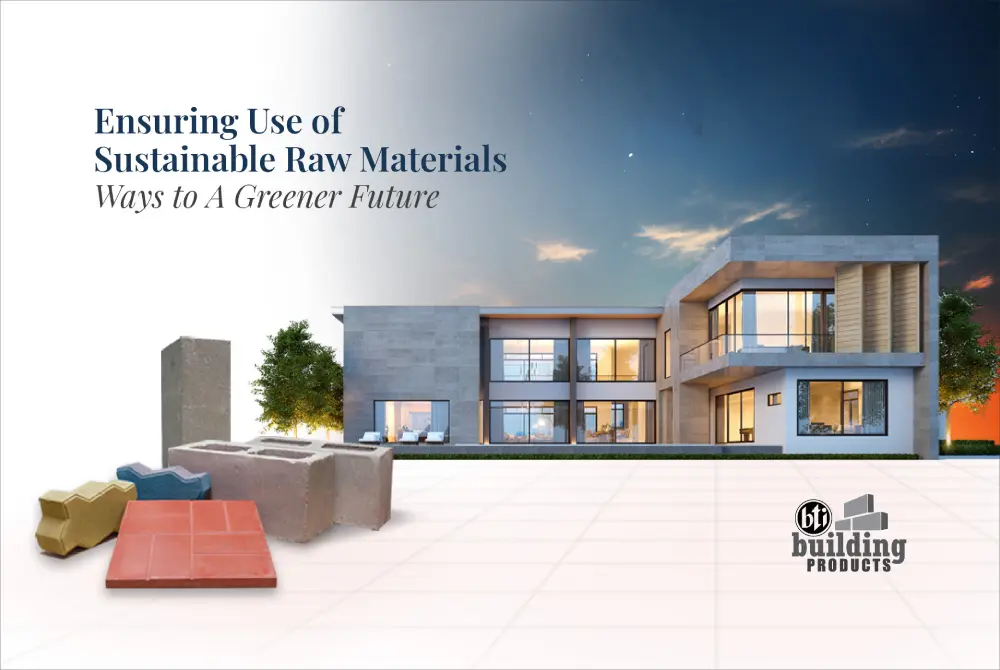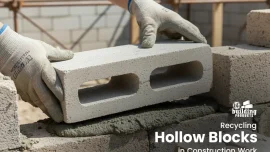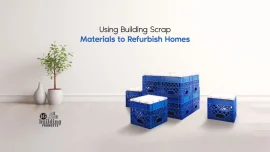
Ensuring Use of Sustainable Raw Materials–Ways To A Greener Future
We are currently living in a world where we are slowly but surely moving towards a future that has far fewer and finite natural resources. After years and years of overusing and exploiting the Earth’s resources, we have finally managed to come to a point where we are suffering the consequences of our actions. Now more than ever, it has become absolutely critical to look for innovative building solutions that harness sustainable raw materials to take us towards a greener future.
Sustainable or green building has a lot of advantages. It reduces the negative impacts of construction on the environment while also offering multiple benefits. Some of these are: energy efficiency, cost efficiency/ savings, as well as improved occupant health. Many companies across the world are already using materials that hold promise and are currently revolutionizing the construction industry. This article shall look into some of these materials and how they are impacting us.
-
Bamboo: The Versatile Wonder of Nature
When it comes to sustainability, perhaps bamboo is the one material that reigns supreme. It is exceptionally durable and has been used in the construction industry for centuries, if not longer. For those of us looking for an alternative to regular timber, either because trees aren’t abundantly in supply locally, or because you’re looking for something with better qualities. The rapid growth of bamboo, as well as its renewability and strength make it an excellent alternative to timber. Some key advantages of using bamboo in building projects are:
- Bamboo is highly renewable as it has a growth rate of up to three feet per day. This means that it can be harvested within a shorter period of time compared to trees.
- Bamboo can be used to create frameworks or structures as it is a naturally strong material. In many cases, it can be used to replace concrete and steel in many instances.
- Since bamboo is naturally resistant to pests and diseases, there is less need to use chemical treatment on bamboo to be used for construction.
- The flexibility of bamboo allows designers and architects to create unique and aesthetically appealing structures.
When bamboo is used in the foundation of a construction, it gives us an opportunity to reduce our carbon footprint in buildings, which in turn leads to a greener future.
-
Recycled Materials: Turning Trash into Treasure
Using recycled or upcycled materials is becoming increasingly popular, especially since more builders are switching over to sustainable building solutions every day. Discarded materials are often given new life by being recycled or reused; which means that we are helping reduce the total amount of waste created and sent to landfills. Here are some of the more commonly used construction materials that are recycled:
- Recycled concrete: Using crushed concrete helps to conserve natural resources while reducing the demand for gravel and sand, both of which are often overexploited and even wasted.
- Salvaged wood: Reclaiming wood from trees damaged by natural causes or old structures reduces deforestation and adds character and uniqueness to new construction projects.
- Recycled plastic: Bottles and bags are counted as waste plastic. These can be transformed into more long lasting building materials, including insulation, roofing tiles, and composite lumber.
There are a number of benefits to be enjoyed by making recycled materials commonplace in regular construction practices. For example, the overall consumption and extraction of raw materials can be reduced, and the carbon footprint we have on the environment can also be diminished.
Other than these two kinds of materials, it is also possible to use materials that are made to be more eco-friendly; such as the building products produced by bti. Not only do these use the best concrete, cement and clay, these bricks and tiles are produced in a way that is eco-friendly and sustainable in nature. The hollow bricks serve as an insulating layer in construction, while pavement tiles and unipavers can be customized according to the area to be covered.
Conclusion:
As we move towards a greener future, the construction industry must adopt innovative building solutions that use sustainable raw materials. By making use of bamboo, recycled materials, and building products from bti, the benefits we can achieve are:
- Reduced impact on the environment: The renewability of bamboo, reduction of waste volume due to using recycled materials, and sustainable concrete blocks and tiles contribute to a greener built environment.
- Cost savings: Sustainable materials often need fewer resources to produce, resulting in cost savings for construction projects.
- Aesthetically pleasing designs: Bamboo’s flexibility and unique textures, along with the character-rich reclaimed wood, offer architects and designers opportunities to create visually appealing structures.
- Improved energy efficiency: Hollow blocks minimize heat loss, enhancing the energy efficiency of buildings and reducing greenhouse gas emissions.
Embracing and eventually completely switching over to sustainable materials not only helps fight environmental challenges, but also lays the foundation for a greener future. By making conscious choices today, we can create buildings that synchronize with nature and contribute to a more sustainable world.




